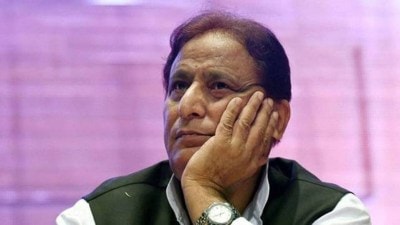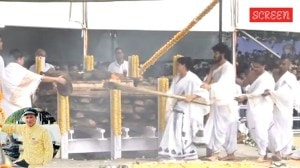The Congress-NCP tussle: Doing the math
While the untimely loss of Andhra CM YS Rajasekhara Reddy,probably the most successful Congress chief minister of his time....
While the untimely loss of Andhra CM YS Rajasekhara Reddy,probably the most successful Congress chief minister of his time,has taken the wind out of the Congress sails,there is yet another crisis waiting in the wings. With the polling for the Maharashtra Assembly elections slated for October 13,a coherent pre-poll plan is proving elusive for the party.
Central to the Congresss positioning is the stand it takes with reference to its partner,the Nationalist Congress Party. Not only is the NCP in alliance with the Congress here,but is also one of its three important allies at the Centre.
Congress leaders are speaking in different voices about the need for a pre-poll alliance. Some,citing the UP/Bihar strategy of the Congress in 2009 want to go it alone and get into a post-poll alliance if necessary. Others,cognizant of the fact that there already is an established tie-up with the NCP want to go ahead with an alliance,but are stalling the junior partner,eager to strike a better bargain for themselves.
The recent Lok Sabha polls in the state though,reveal a complicated scenario. An analysis done by political scientist Suhas Palshikar and his team (Department of Politics ,University of Pune) reveals that if the Lok Sabha results are split into Assembly segments,the record of leads shows that the Congress gained a lead in 81 Assembly segments (17 Lok Sabha seats). Whereas the NCP,winning 8 Lok Sabha seats,was ahead in only 50 Assembly segments. This is the reverse of the scenario in the previous election,when the NCP (with leads in 71 seats) was ahead of the Congresss lead in 69 Assembly seats. This could be the reason why several in the Congress are anxious to shake off the NCP and push the anti-incumbency buck onto them,trying to make the most of the goodwill on display in the 2009 polls.
But as Palshikars team has gathered from the same data,the reason why the Congress,despite the cold-shouldering of the NCP,is not snapping ties just yet is the thin margins of victory and many players on the scene who could prove to be spoilers. Not just the NCP,but also the SP and BSP in some areas and the RPI could sap vital votes.
Data also reveals,that of the seats in which the Congress and the NCP lost,the number of seats in which the NCP came second was far higher than where the Congress came number two. The number of Assembly segments where the Congress was second is 56,while the NCP came second in 71 assembly segments. And this,despite the NCP contesting fewer seats this year.
So,its a tough call for the Congress if the data of the last Lok Sabha elections is to be the basis. The appointment of Sushilkumar Shinde as the in-charge for the Congress Campaign Committee has,of course,come as a breather for the NCP. Shinde is being seen as more likely to cement an alliance – more than leaders like Vilas Rao Deshmukh or Balasaheb Vikhe Patil (the incharge last year) who have been queering the pitch and arguing that the Congress should go it alone.
Photos



- 01
- 02
- 03
- 04
- 05




























